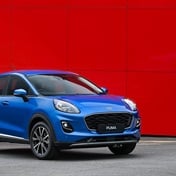
ANN ARBOR, Michigan - Automakers and researchers say a new simulated city at the University of Michigan could help to accelerate the development of driverless and connected cars.
The 16 hectare site on the university's campus officially opened on Monday (July 20 2015). Mcity, a R124-million testing ground to be run as the Mobility Transformation Centre (MTC), is a partnership with the university, US state and federal governments as well as automakers and technology companies.
The site has many familiar features of urban driving; road junctions, a railway crossing, two roundabouts, brick and gravel roads, and parking spaces. Moveable building facades and fake pedestrians can be altered according to the tests to be done.
ADVANCED TESTING SITE
There's a simulated highway entrance ramp and two features - a metal bridge and a tunnel - will be a special challenge for wireless signals and radar sensors.
MBT director Peter Sweatman said testing sites in Sweden and Japan had some of the same features but the Michigan one was, he said, one of the most advanced autonomous-vehicle testing grounds in the world.
Automakers, high-tech companies and university researchers will test car-to-car communication which one day would predict collisions and stop cars before they happened.
They'll also be testing semi-autonomous and driverless vehicles.
PAVING WAY FOR NO-DRIVER CARS
Ryan Eustice, an associate professor of engineering at the university, has - with Ford - been testing driverless cars at the site since November 2014 when the roads were paved but other features were not yet installed.
Eustice said the site allowed researchers to be "maximally evil" toward the car, putting it into all sorts of situations that could quickly and easily be repeated, such as a model of a pedestrian obscured by a bus that walks out into traffic.
Every kilometer of testing at the site is worth hundreds of kilometers of real-world driving, he claims, since it could take hours of real driving to come upon a scenario too difficult for the car to handle.
Eustice said: "In terms of the weird stuff, we can pack it all in in a very dense way."
DIRTY ROAD SIGN TEST
Hideki Hada, general manager of integrated systems at Toyota's engineering campus in Ann Arbor, said Toyota had a test city in Japan but it was a neutral site that would allow it to make sure its cars could communicate with those of other brands.
Toyota and other companies, he said, had input into what would be included at the site. One of his requests: mud-splashed road signs so that automakers can make sure their cameras can still read them.
Sweatman said the Michigan site would also leave a lot of snow on the ground in winter so automakers could make sure that cameras and radar used in driverless systems would work in snow.




 Publications
Publications
 Partners
Partners















